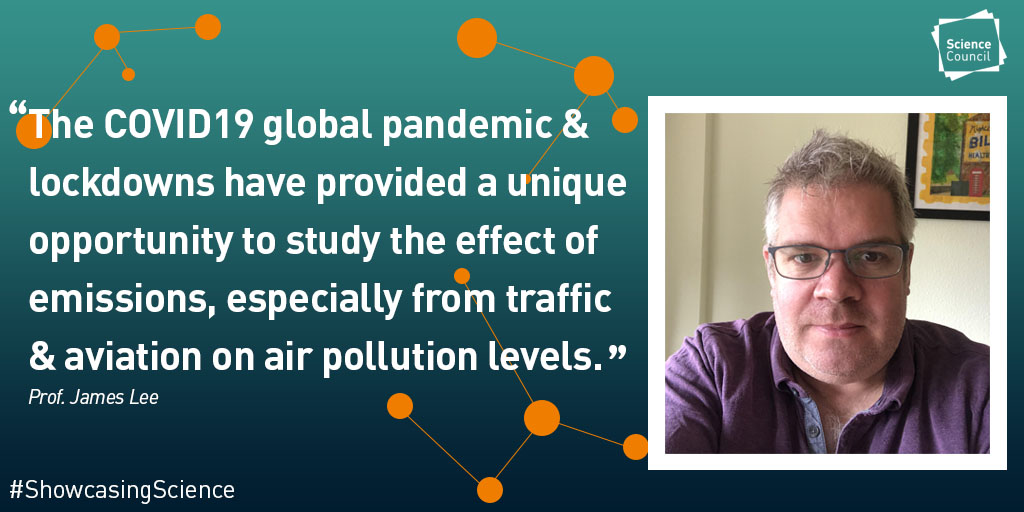
Showcasing Science: Air pollution in lockdown
Prof. James Lee (National Centre for Atmospheric Science and the University of York) on behalf of the Royal Meteorological Society.
Air pollution is currently the largest environmental health issue affecting the UK population. At present the main pollutants in cities are nitrogen dioxide, particles less than 2.5µm in diameter (PM2.5) and ozone. It is estimated that air pollution causes 40,000 premature deaths/year in England, and costs the UK economy between £10 billion and £20 billion/year.
The COVID-19 global pandemic and associated lockdowns has provided a unique opportunity to study the effect of a large change in emissions, especially from traffic, aviation and industry, on air pollution levels. The UK has a network of Automatic Urban and Rural (AURN) automatic air quality monitoring stations measuring nitrogen dioxide, ozone and PM2.5. These sites provide hourly measurements, which are available in near-real time to scientists, policymakers and the public. We see that, on average, nitrogen dioxide has decreased by 40% at urban sites during the lockdown period, compared to the previous 5 years. Ozone is not emitted directly but formed when nitrogen dioxide and volatile organic compounds react in the presence of sunlight. Levels of ozone increased during the lockdown due to the complex interaction of the precursor compounds and weather conditions.
Interestingly, PM2.5 did not really change during the lockdown period. This data demonstrates that the large reduction in traffic as a result of the lockdown, does have a significant effect on air quality, especially nitrogen dioxide in urban areas or near to major roads. It also demonstrates that particulates come from a much wider range of sources than just traffic (including agriculture, solid fuel and garden waste burning). The lockdown period is providing us with a unique window into what air pollution might be like in cities with a largely electric vehicles (as may happen in the future). It shows the benefits that would come alongside reduced traffic emissions but also the additional challenges that are likely to occur (for example the importance of controlling other sources of particles and the potentially for greatly enhanced ozone).
Whilst air pollution changes during the lockdown provided an exciting and unexpected area of research which was possible to do remotely, the last few months have also had their challenges. Since mid-March I have been working exclusively from home because my partner is in the extremely vulnerable group and has been shielding. We have both found this very difficult at times, especially during recent weeks as lockdown has eased for others but we have remained largely at home. This has caused tension as we try to balance doing our jobs and keeping sane with staying safe. I also tried to stay very aware of the effect of lockdown on my group. I setup virtual coffee mornings, regular individual and group meetings with my PhD students and post-docs to ensure that everyone had all the support they needed. Obviously everyone had different needs during the lockdown and I did my best to provide enough support without being overbearing, especially for the 2 students nearing the completion of their theses.
There have been other challenges. Fieldwork was cancelled or postponed for at least a year, causing considerable disruption to my research. In the first few weeks of lockdown I spent a large amount of time dealing with press enquiries about air pollution. It was great that there was so much interest in my area of research (there were over 30 print, online and broadcast articles) but also stressful at times, especially getting up at 6am for a BBC Radio 5Live interview!
The lockdown has been a rollercoaster for everyone with good and bad times, opportunities and challenges. But I always look at things with the constant thought of how lucky I am to have a comfortable working environment at home, a supportive partner and a great job that has not been affected too much by the pandemic.
This blog was published as part of our Showcasing Science: Behind the scenes of COVID19 series. Read the rest of the blogs here.
